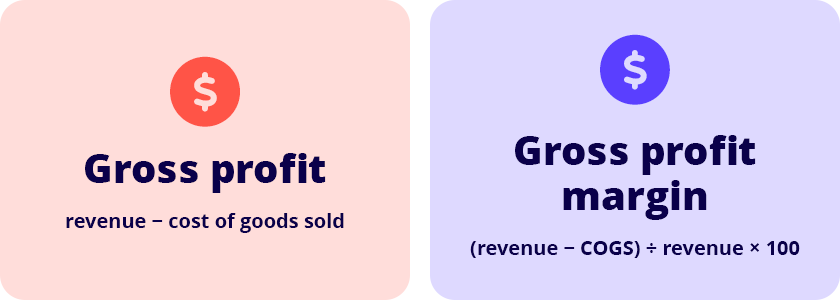Your net profit, or net income, is a vital business metric used in understanding how much money you’re making after considering your business expenses and running costs.
While gross profit only considers your COGS or cost of goods sold, net profit goes further. Net profit includes every overhead to reveal the overall profitability of your small business.
Net profit formula
The formula used to calculate net profit is as follows:
Net Profit = Revenue – Total Costs

What are total costs?
To understand your net profit, you must first calculate ‘total costs’, or every single expense you incur in running your business. This includes materials, rent, marketing, power, wages, taxes, depreciation et cetera.
Net profit margin
Your net profit margin is a useful way of expressing your net profit for reporting and planning purposes. When you can see your business’s profitability as a percentage, instead of a whole number, you have a clearer overview of your performance.
A higher net profit margin means you’re making more money per dollar spent. Once you understand your net profit margin, you can monitor when it dips too low and can work to improve it.
Net profit margin formula
To calculate net profit margin, the formula is as follows:
Net Profit Margin = (Revenue – Total Costs) / Revenue x 100
Net profitability
Generally, to calculate profit margin, you’ll need to know the percentage of revenue you have left after deducting all the expenses you incurred in generating that revenue.
Indeed, your net profitability paints a stark picture of how much money you’re making after all expenses are accounted for. It is an extremely useful metric that shows you how healthy and profitable your business is.
See related terms
What Is net profit?
What Is gross profit?
Gross profit vs net profit
How to calculate gross profit margin?































